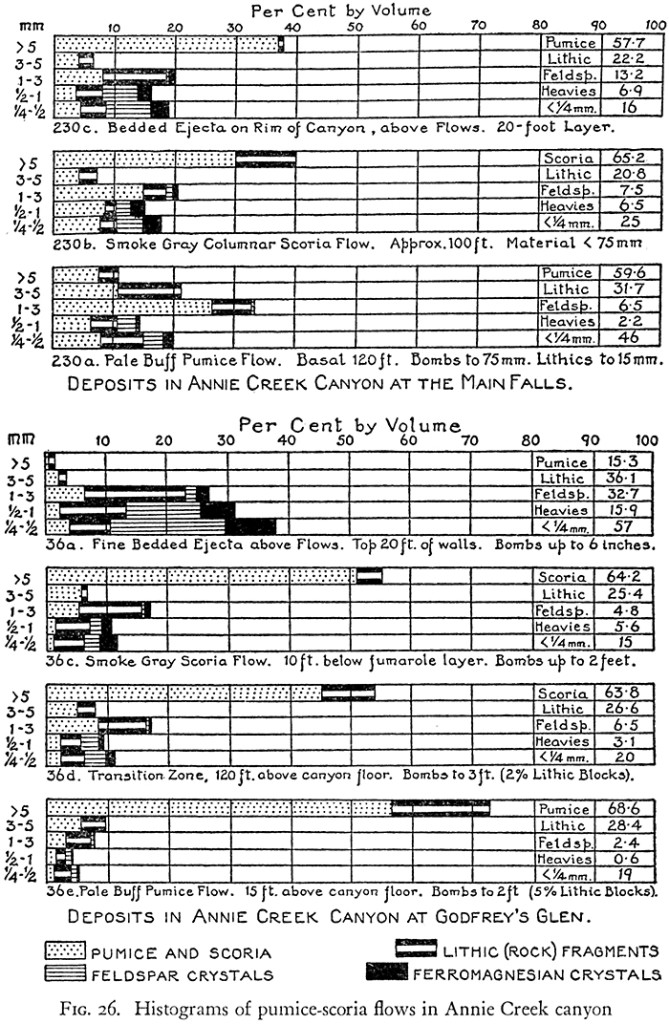It might be supposed that the rapid eruption of many cubic miles of magma would be attended by the expulsion of large blocks of lava torn from the sides of the conduit and the summit of the volcano. Yet such blocks are rare. The debris torn from the sides and top of Mount Mazama during the eruption of the glowing avalanches is mostly of the size of coarse sand and gravel. This paucity of large blocks is in marked contrast with their abundance among the nuée ardente deposits of most volcanoes.
We cannot properly attribute this scarcity of large rock fragments to shattering during transport, for dense lava blocks would hardly be comminuted when immersed in gas-charged flows of the type in question. More likely, the magma which produced the flows rose high in the conduits and only began to froth violently when it had almost reached the surface. Instead of shattering the sides of the conduit and crater, the frothing pumice and scoria merely cored them by abrasion. Perret’s masterly account of the recent eruptions of Mount Pelée gives a vivid picture of what the conditions at Mount Mazama must have been like.8
Finally, it should be noted that although the scoria flows usually carry more lithic material than the underlying pumice flows, the distribution of the foreign debris is otherwise quite haphazard, the fragments being thoroughly scattered throughout.
***previous*** — ***next***


